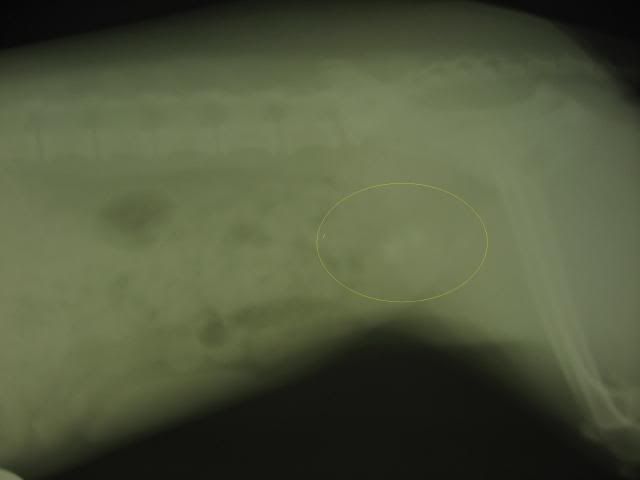
If you look carefully, you can see two small objects in the back part of the abdomen. They will be small, irregular, and slightly more white than the surrounding tissue (the urinary bladder). These are bladder stones. And this is what they looked like after I removed them surgically today.


Bladder stones are a common cause of recurring urinary tract infections (UTIs), especially if there is blood in the urine. If a UTI keeps coming back or doesn't seem to want to go away, veterinarians will usually want to do x-rays or ultrasound of the abdomen. If this recommendation is made, listen to your vet. Stones can cause much irritation to the bladder, and can be very uncomfortable. Small stones or pieces of stones can even lodge in the lower urinary tract, especially in males.
Several things can cause stones to form. Some breeds are particularly prone to them (such as dalmations and schnauzers) due to how their kidneys process and filter material in the blood. Some diets have been shown to increase the risk of stone formation if a dog or cat is prone to it. Usually the process begins with a simple UTI, and a cluster of bacteria forms. Microscopic crystals then collect around that bacterial cluster, eventually growing larger. At some point, the stones can cause further irritation to the bladder, leading to further infections or simply bleeding in the urine.
Most stones have to be removed surgically, though some can be dissolved with special diets or medications. If you suspect this might be a problem, check with your vet.
Oh, and Brac came through the surgery just great, and is expected to make a full recovery.